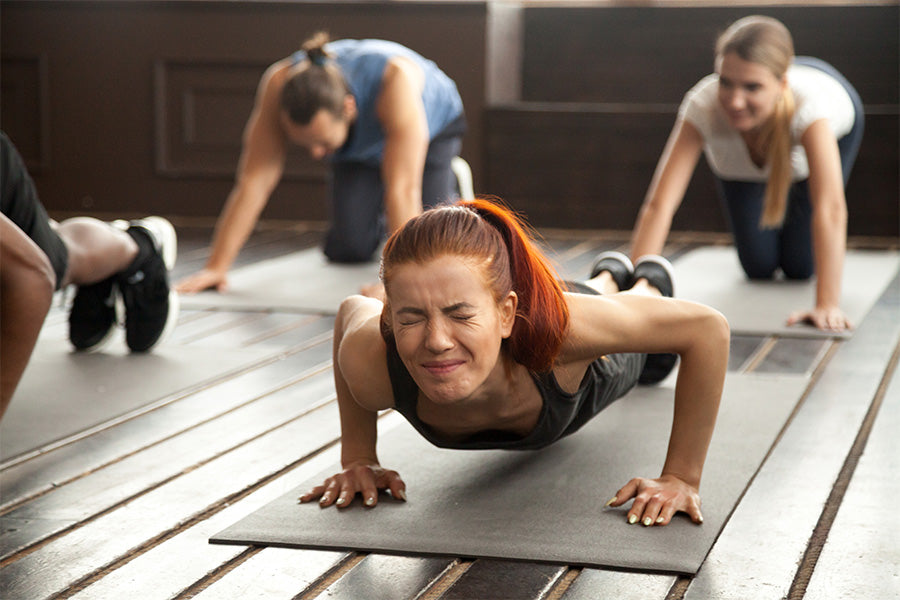After a productive strength training session, you may feel the burn. The cause of this sensation is delayed onset muscle soreness or DOMS. DOMS is thought to be caused by microscopic tears in your muscle fibers that occur due to resistance training or any new stimulus in general.
Since DOMS occurs after a productive workout, the good news is your workout is paying off but at the expense of DOMS. There is also another thing, too much soreness can hamper your training, particularly with leg soreness.
Muscle soreness can start 24 - 72 hours after a strenuous exercise and lasts up to a week; it can also negatively interfere with recovery. The soreness typically goes away in a few days, but if it doesn't, it may indicate you have injured your muscle. If this is so, then you need to go to a doctor.
Despite this, you can treat muscle soreness by following some tips I will share in the coming sections. So get ready!
Related Article: 8 Ways to Relieve Muscle Soreness After Exercise
Tips to Relieve Muscle Soreness
Since muscle soreness negatively affects recovery. Optimizing your recovery is vital when facing Delayed Onset Muscle Soreness. To help you reach peak performance and feel energized, here are some tips to keep in mind!
Light Stretching
Stretching is the first and foremost thing you can start with, as it works by lengthening the tightened muscles. So it can be a game-changer and crucial if you want to advance in your pursuit of improved health and fitness, as it helps increase circulation and flexibility while relieving muscular stress.
You can perform 4-8 sets of dynamic stretching of affected muscles in multiple ways. Dynamic stretching is the range of motion of both joints and muscles.
A few examples of light dynamic stretching include arm circles, lunge with a spinal twist, leg swing, inchworm, and knee to chest. So pull out your yoga mat and start performing these dynamic movements today!
Pain Management
After performing light stretches, the next thing is to manage your pain. You can do a couple of things to address it by working on the cause or causes of pain. A very effective and quick way to reduce muscle soreness is by performing self-myofascial release. It is a technique you can perform in the comfort of your home using the myofascial release foam roller.
Start with getting your fingers in the area of pain. You can massage the painful muscle region. While rubbing the affected region, you will feel a point muscles feel tight; now, if you gently push on trigger points, they will loosen up.
Another way to manage pain is by using the myofascial release foam roller. The roller can assist in reducing discomfort in any area of your body. You can use it by placing correctly in a way that you can roll back and forth, whether standing, sitting, or lying down.
Use of Compression Gear & Massage Technique
Massage techniques have been in practice to loosen up tense muscles for ages. Besides that, massages also relieve acute pains by lowering tissue inflammation, boosting blood flow, and blocking pain signal pathways. All of this can aid you in extreme muscle soreness after a workout if performed correctly.
Compression gears are a perfect answer to your question about how to get rid of soreness after a workout. Compression apparel does this by reducing inflammation and improving endurance. When you perform a vigorous workout, tiny vibrations are produced in your muscles that move like ripples; these garments also work by reducing such vibrations. Not only this but the targeted padding and no-slip design also aid in improving soreness and temperature regulation.
Post-Workout Nutrition
Nutrition is the best pain reliever for sore muscles after a workout. Several foods and supplements can help you in this regard. It is seen that omega-3 fatty acids enhance muscle development and repair. Therefore, consuming more fish and a few high-quality omega-3 fish oil supplements can enhance overall healing.
There is a piece of good news for caffeine lovers! Consuming caffeine before a workout can significantly reduce your post-workout muscular pain. Some other foods that can help you with post-workout muscle soreness include cottage cheese, sweet potato, salmon, watermelon, eggs, banana, spinach, nuts and seeds, turmeric, and protein bars.
How to Get Back Towards Strength Training
Are you hesitant to enter the weight room again once the ache passes? Just relax; this is normal. Embrace the thrill of discovery and take proactive steps to ensure you're as ready for it as possible - this will let your experience be all the more sensational!
Start With a Proper Warm-Up Session
Ready to restart your strength training workout? Let's get started! To warm up your muscles, begin with a light jog or brisk walk for 5-10 minutes. Stretch afterward to target the areas you'll be using and increase your range of motion.
Once the body is primed, you can move on to strength exercises; choose an appropriate weight according to your skill level. As fitness progresses over time, remember to move up by gradually increasing the weight you are using in each exercise.
Focus on Your Diet
Nourish yourself by eating healthy, wholesome, unprocessed foods like fresh fruits and vegetables, lean proteins, fish and nuts. Replace processed grains and refined sugars with healthier alternatives. Additionally, make sure you hit your protein goals daily through shakes or other food sources.
Take Rest Between Sets
While strength training is essential to any fitness routine, one should rest between sets. Take 1-2 minutes to allow your body to recover and refuel. Proper form during each set will help you maximize the benefits while avoiding injury.
Listen to Your Body While Making Progressions
Start slow and steady if you want to get back into strength training. Gradually increase the intensity of your exercises as your body adjusts and takes rests when needed. Instead of making large jumps in progressions too soon, challenge yourself with small steps over time.
Make sure to listen intently for signs from your body that indicate if it needs a break or extra rest - don't push beyond what's comfortable right away. Start slowly but surely on this journey towards physical fitness success; observe how much you can do while challenging yourself.
Related Article: 5 Most Important Tips to Start Your Fitness Journey
FAQs
1. Are you supposed to be sore after strength training?
After beginning strength training, it is normal to experience soreness in the muscles that have been worked. This soreness, known as 'DOMS' (delayed onset muscle soreness), is a sign that your muscles are adapting and growing.
This indicates that you have pushed yourself hard enough during your workout for your body to start repairing and building up the area. Although uncomfortable, DOMS should be seen as a good thing.
2. How do I not be sore after strength training?
It is essential for anyone engaging in strength training to warm up and cool down properly to avoid muscle soreness. Before beginning a workout, it's important to do dynamic stretching and light aerobic exercises like jogging or jumping jacks; this helps get your body ready for exercise by increasing blood flow, improving range of motion, and helping avoid potential injuries.
After the workout, it's just as important to cool down by doing more stretching or light cardio activities; this helps reduce lactic acid buildup, decrease tension in muscles, and aids recovery.
3. Does no soreness mean no growth?
While feeling stiff and uncomfortable could seem weirdly pleasurable, it's not always a reliable indication that growth has been sped up. Similarly, just because you don't feel pain doesn't imply your muscles aren't expanding.
4. Do bodybuilders stop getting sore?
The answer to this question is yes and no. Yes, bodybuilders can stop getting sore because the body adapts to the type of exercise done over time. As a person lifts heavier weights and does more workouts, their muscles become less sensitive to the stress being exerted on them.
However, even experienced bodybuilders can still feel muscular fatigue or tension during or after workouts—this indicates that their bodies are working hard and recovering from the intense physical strain, which is necessary for progress in fitness goals.
So even though DOMS may decrease with consistency, there will always be some degree of muscular discomfort if one wishes to build strength or improve physique.
Takeaway
Muscle soreness is one of the prevalent and essential issues, which, if not treated timely, can lead to muscle tears. This article is for you if you're a beginner, detrained, or just starting a new exercise routine resulting in delayed onset muscle soreness.
Coming out of this post-workout soreness phase has never been so easy before. All you need to do is start with 8-10 dynamic stretches, manage your pain, use several compression gears, massage, and focus on your nutrition and the correct supplements.
Once your soreness is settled, you can restart your strenuous training simply by focusing on a couple more things to avoid the soreness relapse. Just have a quick warm-up, focus on your diet, and last but not least, listen to how your body responds. It is as simple as that to be back on track.
Reading List
Article Sources
- Krentz, Joel R., and Jonathan P. Farthing. “Neural and Morphological Changes in Response to a 20-Day Intense Eccentric Training Protocol.” European Journal of Applied Physiology, vol. 110, no. 2, Sept. 2010, pp. 333–40. PubMed, https://doi.org/10.1007/s00421-010-1513-8.
- Diep, Susan. “DOMS.” Ultrasound in Medicine and Biology, vol. 45, Jan. 2019, p. S46. www.umbjournal.org, https://doi.org/10.1016/j.ultrasmedbio.2019.07.564.











